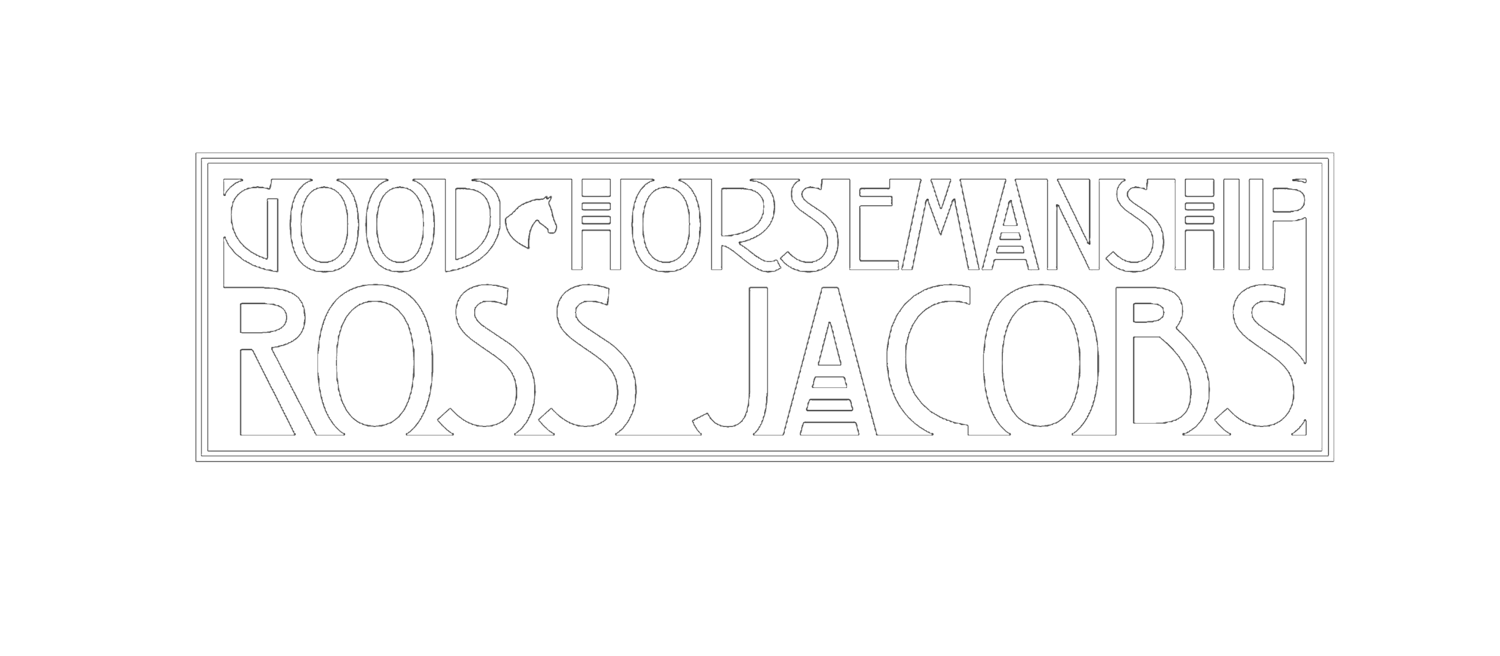Along with concepts like contact and on the bit, the half-halt is a subject that is very confusing and mystical for many riders. The term "half-halt" is mostly used in dressage, but its importance and application extend to all forms of riding.
I have heard many people refer to the half-halt as half a halt, and they are not wrong. It is an attempt to halt that lasts a fraction of a second and where the halt is released before the horse actually stops. However, I think the half-halt is more than just a semi-halt, which I will discuss a little later. Nevertheless in its essence, the half-halt is a rebalancing of a horse by further engagement of the hindquarters.
The half-halt is not just for dressage riders. Its principle is relevant to all disciplines where the balance of the horse is important. I hope it helps some who struggle with this elusive concept.
In simple terms in the act of engaging a horse’s hindquarters, the forehand is raised, the hind end is lowered through flexion of the hocks and there is a partial redistribution of weight from front to back.
Therefore, in the process of a half-halt, the horse is lightening the forehand and shifting more weight to the hindquarters. To achieve this, the rider’s aids are applied for a fraction of a second to coincide with the lifting of the outside hindleg. That’s what it does in the simplest terms.
The half-halt is applied a lot in the training of the dressage horse and therefore, learning to execute it correctly is required by any serious dressage rider. However, you can also see it performed by many jumping, hunting, and event riders in front of a jump where the rider asks a horse to rebalance a stride or two out from the take-off position.
There are many books, videos, and websites that will describe how to perform a halt-halt. So for further understanding of the mechanics of how to teach your horse to halt-halt search around – there is no shortage of information.
Nevertheless, understanding the biomechanics of how to use your seat, reins, and legs and how a horse should respond by raising its forehand and engaging its hindquarters gives a rider only a superficial appreciation of the role and importance of the half-halt. Its function is much more than closing a rider’s aids in an envelope around a horse for half a second to create a rebalancing.
At a deeper level, a half-halt offers a horse a “pay attention” warning that something is about to change. The way most riders use the half-halt is to inform a horse that it should prepare for what is coming next. It’s like a “Hey you, pay attention” to a horse.
At a clinic in New Zealand, I rode a sweet QH mare that I suspect had been spurred and spurred to do everything fast when it was started. The present owner had inherited a horse that could only go fast when asked to trot or canter. When I first got on the mare I had underestimated and was surprised at the rocket that was under me. She ran with fear and ran hard. I used my inside rein to direct her thoughts and forehand into ever-decreasing circles until she could slow her feet. Then I released the inside rein and allowed her to go straight until I felt her fear overtake her again within a couple of strides or so.
I rode her for about 20 minutes (I think), but by the end of the ride when I felt the mare’s thoughts leave me and her energy elevate I only had to apply a small amount of feel to one rein and she quickly settled again. In my opinion, the touch of one rein was a half-halt because it instantly refocused the horse’s thought and shifted her weight from being forward in an effort to rush to being more under me. Perhaps some people would not consider the way I applied the rein as a half-halt, but in practice, it achieved exactly what a half-halt is designed to achieve.
I relate that story only because I want to convey that a half-halt is not just a mechanical procedure to make a horse rebalance its body. When done well, it also rebalances a horse’s thoughts.
But to take the concept of a half-halt even further, it could be argued that as a horse gains more focus, more clarity, and more softness, a half-halt becomes unnecessary when training a horse. In the process of improving focus, clarity, and softness all the things a half-halt is supposed to achieve are already being taken care of. In an ideal world, the half-halt should eventually become redundant because a horse is always focused and soft enough to be ready and balanced for the next thing a rider might ask. But that’s in an ideal world.
In this world (and probably several others like it if you believe in the multi-universe theory), half-halts are very useful and perhaps even important when done correctly. But it is important to note that the half-halt is more than just a physical rebalancing of a horse. It has to engage a horse’s mind as well as its hindquarters if it is to be of real use.
The video clip offers a very brief and oversimplification of the half-halt. I don’t like or agree with it much, but I think it will give people who are still confused by the halt-halt some degree of understanding.
